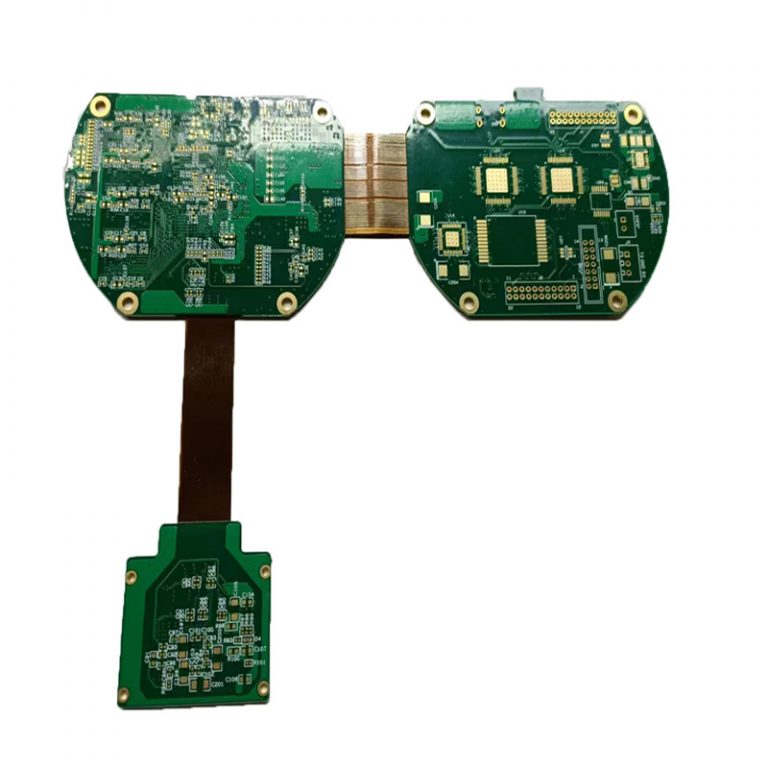The advantages of camera rigid-flex board
By combining the properties of rigid and flexible PCBs, rigid-flex PCBs offer many benefits to manufacturers and consumers.
Mechanical Stability – Their basic structure consists of interchanged layers of rigid and flexible PCBs. This ensures they are both stable and flexible for easy installation in tight spaces.
Connection Reliability – With a rigid-flex PCB, you get higher stability and polarity, making connections to other components easier and safer. You also need fewer connector components per application.
Dynamic – In addition to repeatability and precision, you enjoy greater packaging flexibility.
Cost Effective – By using a rigid-flex PCB, you can reduce your overall outlay.
High Density Applications – Arguably the biggest benefit of rigid-flex PCBs is that they can be used in high density device populations. This is due to their flexibility, stability and low space usage.
High shock and vibration resistance – Electronic components are used in a wide range of items, some of which experience constant vibration. With this type of equipment, you don’t need to worry about damage because the rigid-flex PCB is highly shock and vibration resistant.
Rigid-Flex PCB product types include:
- Type 1: Single sided flexible material with or without shield(s) or stiffener (one conductive layer).
- Type 2: Double sided flexible material with or without shield(s) or stiffener (two conductor layers) with plated through holes.
- Type 3: Multilayer flexible material with or without shield(s) or stiffener (more than two conductor layers) with plated through holes and HDI.
- Type 4: Multilayer rigid and flexible material combinations (more than two conductor layers) with plated through holes and HDI.
Service Offerings:
- Innovative Rigid-Flex Processes
- Premium Material Sets
- Rigid-Flex with HDI
- Loose Leaf Construction
- Oversized Panels
- Layer counts to 40+
- Heat Sink Application
- Internal Quality Standards that often exceed the requirements of IPC-6013, MIL-PRF-31032 and MIL-P-50884 for registration, hole quality and overall reliability.
Value-Added Solutions:
- Flex Assembly
- Product Engineering
- Design / Layout
- Reverse Engineering
- Technical Training
- VMI
- Concurrent Engineering
- Applications Support
RunTek ELECTRONICS – Your Leading Rigid-Flex PCB Supplier
Rigid-flex PCBs are boards that combine the best of flexible and rigid-board technology
Designs vary greatly, and can be combined with a wide range of materials to support multiple use cases in a constant state of flex — often a flexed curve created during the manufacturing process, or can be made during final installation.
Why You Need Rigid Flexible Circuits From RunTek PCBs Factory
These printed circuit boards create a more challenging design for rigid-flex manufacturers, but we’ve been able to supply successful designs with full compliance and reliability. By engineering these in a 3D environment, we’re able to achieve spatial efficiency and incorporate folds and flexes that can help you meet a desired shape that works best with your application.
A rigid-flex printed circuit board can help you with issues in reducing space, as well as making sure your products can stand up to tough conditions and ensuring they are cost-efficient. Using a rigid flexible format allows you to use fewer parts and interconnections and to take on more aggressive design challenges, as the rigid-flex PCB is a flexible solution to numerous design issues. They have applications for industries ranging from hearing aids to night vision goggles and more.
What Is the Difference Between a Flex and a Rigid-Flex Printed Circuit Board?
The rigid-flex printed circuit board gives you the best of both worlds. A rigid-flex PCB combines the flexibility of flex circuits with the durability of a rigid PCB. A flex-printed circuit board has only flexible materials, usually polyimide or polyester-based. They can be single-layer, double-layer or multilayer boards. A rigid flex PCB has both flexible and rigid materials, with flexible layers sandwiched in between rigid layers with conductors and plated through holes that connect them to the other layers.
Flexible circuit boards by themselves may not stand up to the wear of certain challenging applications, but standard rigid boards tend to be heavy and take up a lot of space. Combining rigid boards with flexible circuits reduces weight and space, giving you a streamlined product you can use in a wide variety of industrial situations.
Layout Recommendations for Rigid-Flex PCBs
Rigid-flex PCB suppliers like RunTek ELECTRONICS provide guidance on layouts and bends to keep your equipment safe. We wanted to present a quick overview to help you understand the thickness and other requirements you may need for your design.
| Circuit Construction | Bend Radius Calculation |
| 1 Layer (single-sided) | Flex Thickness x 6 |
| 2 Layer (double-sided) | Flex Thickness x 12 |
| Multi-Layer | Flex Thickness x 24 |

